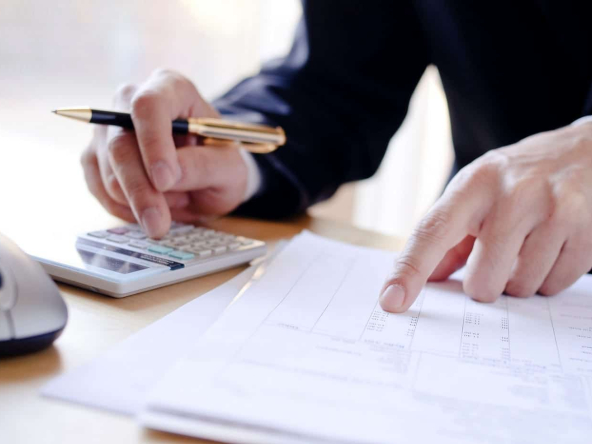Property accounting is a fundamental aspect of financial management for businesses and organizations that own, use, or invest in various types of assets. Properly accounting for these assets is crucial for accurate financial reporting, compliance with regulations, and making informed decisions.
In this comprehensive guide, we will delve into the essential principles of property accounting, exploring everything from acquisition and valuation to depreciation and disposal, emphasizing the significance of incorporating professional Property Accounting and Financial Services. This ensures a comprehensive and expert approach to property accounting, providing accurate insights and guidance throughout the entire lifecycle of assets, contributing to effective financial management and decision-making.
Types of Property
Property accounting encompasses various types of assets, each with its own unique characteristics and accounting requirements.
Here are the main categories of property:
Real Estate
Real estate includes land, buildings, and any attached structures. Accounting for real estate assets involves considerations such as property valuation, depreciation, and property taxes.
Tangible Personal Property
Tangible personal property consists of movable assets like equipment, vehicles, machinery, and furniture. Accurate tracking and depreciation of these assets are essential for financial accuracy.
Intangible Property
Intangible property comprises assets like patents, trademarks, copyrights, and intellectual property. Valuing and amortizing these assets require specialized accounting treatment.
Natural Resources
Natural resources such as oil, gas, minerals, and timber have specific accounting requirements, often involving depletion calculations and impairment assessments.
Acquisition and Valuation
The process of property accounting begins with the acquisition and valuation of assets. This step is vital to ensure that property is properly recorded in the organization’s financial records.
Initial Recognition
When a property is acquired, it should be recorded in the accounting books at its fair market value or cost, depending on the accounting method chosen. The initial recognition involves:
- Identifying the property.
- Determining its acquisition cost.
- Assigning a useful life (for depreciation purposes).
Valuation Methods
Valuing property accurately is essential for financial reporting and decision-making. Common valuation methods include:
- Appraisal: Independent assessments of property value.
- Market Value: Current market prices.
- Historical Cost: The original acquisition cost.
- Replacement Cost: Cost to replace the property with a similar one.
Choosing the appropriate valuation method depends on the type of property and its intended use.
Depreciation and Amortization
Depreciation for Tangible Assets
Depreciation is the systematic allocation of the cost of tangible assets over their useful lives. Two primary methods are used for this purpose:
Straight-Line Method
The straight-line method allocates the property’s cost evenly over its useful life. This method is commonly used for equipment and vehicles.
Declining Balance Method
The declining balance method applies a higher depreciation rate to the asset’s book value, resulting in larger depreciation expenses in the early years and decreasing expenses over time. This approach is often used for assets that rapidly lose value.
Amortization for Intangible Assets
Amortization is the counterpart of depreciation for intangible assets, spreading their cost over their estimated useful lives. Two primary methods are employed:
Straight-Line Amortization
Just like the straight-line method for tangible assets, straight-line amortization spreads the cost of intangible assets evenly over their estimated useful lives. This is commonly used for patents and copyrights.
Accelerated Amortization
For intangible assets that lose value quickly, accelerated amortization may be more appropriate. It front-loads the amortization expense, reflecting the asset’s decreasing value more accurately.
Recording Property Disposals
Sale of Property
When a property is sold or disposed of, the accounting treatment involves:
- Recognizing the gain or loss on the disposal.
- Removing the property from the books.
- Adjusting depreciation or amortization expenses accordingly.
The gain or loss on disposal is calculated as the difference between the selling price and the property’s book value.
Retirement of Property
In cases where property is no longer usable but has no resale value, it is retired from the books. The asset’s remaining book value is typically written off as an expense.
Importance of Property Accounting
Property accounting serves several critical purposes within an organization:
Financial Reporting
Accurate property accounting ensures that a company’s financial statements reflect the true value of its assets and liabilities. This information is crucial for investors, creditors, and other stakeholders when making financial decisions.
Compliance
Adhering to property accounting principles is essential to comply with accounting standards and regulations, such as the Generally Accepted Accounting Principles (GAAP) in the United States. Compliance reduces the risk of legal issues and penalties.
Strategic Decision-Making
Property accounting helps organizations make informed decisions regarding property acquisition, disposal, and maintenance. It provides insights into the financial implications of these decisions.
Tax Planning
Properly accounting for property can also lead to tax benefits. Understanding depreciation and amortization rules can result in tax deductions that reduce a company’s tax liability.
Challenges in Property Accounting
Property accounting is not without its challenges:
Fair Value Assessment
Determining the fair value of property can be challenging, especially in volatile markets where property values fluctuate rapidly.
Useful Life Estimates
Estimating the useful life of an asset is crucial for depreciation and amortization calculations. Incorrect estimates can lead to financial misstatements.
Changes in Regulations
Accounting standards and tax regulations related to property accounting can change over time. Staying compliant with the latest rules can be complex.
Conclusion
In conclusion, understanding property accounting principles is essential for organizations of all sizes and industries. Accurate accounting for property ensures transparent financial reporting, regulatory compliance, and informed decision-making.
Whether you are dealing with real estate, equipment, or intangible assets, applying the right accounting principles will help your organization manage its property effectively and maximize its financial performance. Stay informed, stay compliant, and make the most of your valuable assets through sound property accounting practices, with the support and expertise of professional Property Accounting and Financial Services enhancing the overall efficiency and effectiveness of your financial management.




